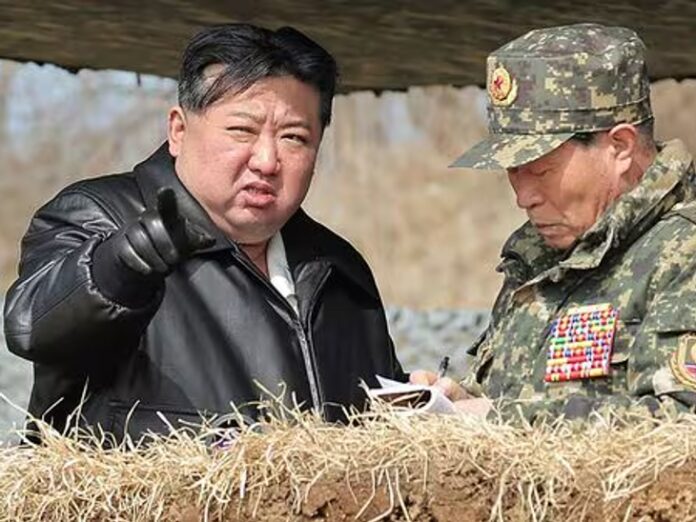13 minutes ago
- copy link
Kim Jong's army has been laying land mines on the border since January.
North Korea has announced the complete closure of its border with South Korea. Dictator Kim Jong's army said on Tuesday that it will close all roads and railway lines leading to South Korea.
Apart from this, fortification will also be done in the areas adjacent to the border. According to North Korea's media house KCNA, the Korean People's Army has said that this decision was taken after observing the war exercises of South Korea and America.
In fact, in the last one year, America has sent its aircraft carriers, military ships, long range bombers and submarines to the Korean Peninsula, due to which North Korea is angry.

In the year 2018, North Korean dictator Kim Jong Un crossed the border and reached South Korea. Here President Moon Jae-in welcomed him.
North Korea is preparing to close the border from January South Korea's Defense Ministry said that they have informed the US-led UN Command Force about this, so that any kind of conflict does not arise in the area. This force manages the Demilitarized Zone (DMZ) between North-South Korea.
Earlier, the South Korean military had told that Kim Jong's army has been laying land mines on the border since January. Apart from this, anti-tank traps have also been installed and most of the railway infrastructure has been removed. In June, several soldiers working to increase military infrastructure on the border were killed in a landmine explosion.
After this decision of North Korea, the risk of increasing tension between the two countries has increased. North and South Korea had earlier fought a war from 1950-53 after the Second World War.
Korea was divided into two parts after Japan's withdrawal Korea is a peninsula, that is, an island surrounded by sea on three sides and connected to the mainland on one side. It was ruled by the Korean Empire until 1904. There was a fierce war between Japan and China in 1904-05 for its possession. Japan won and captured Korea. After the defeat in the Second World War in 1945, Japan had to leave Korea.
As soon as Japan withdrew, Korea was divided into two parts. 38 parallel lines were considered as the dividing line. Soviet troops were deployed in the northern part and United Nations forces were deployed in the southern part.
The government of the People's Republic of Korea was formed in North Korea under the leadership of Korean communists. The government was formed in the South democratically under the leadership of leader Syngman Rhee. The North was inclined towards communist ideology, while the South was inclined towards capitalist countries. The controversy started from here.
North Korea crossed the 38th parallel line and attacked South Korea on June 25, 1950. After 3 years of war, North and South Korea signed an armistice in 1953. Once again the border was fixed at the same 38 parallel which was before the war.

Maximum deployment of weapons on North-South Korea border The DMZ between North and South Korea is the world's most heavily deployed border. According to statistics, 20 lakh mines have been laid in and around the border. Apart from this, barbed wire fences, tank nets and combat soldiers are also deployed on both sides of the border. This border was created under the agreement to end the Korean War.

